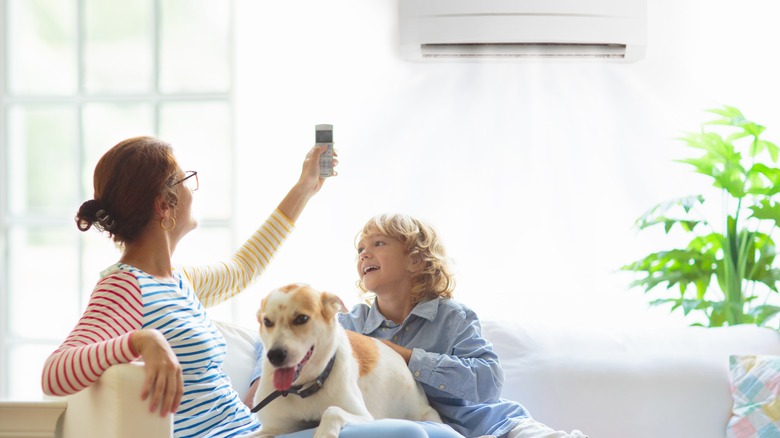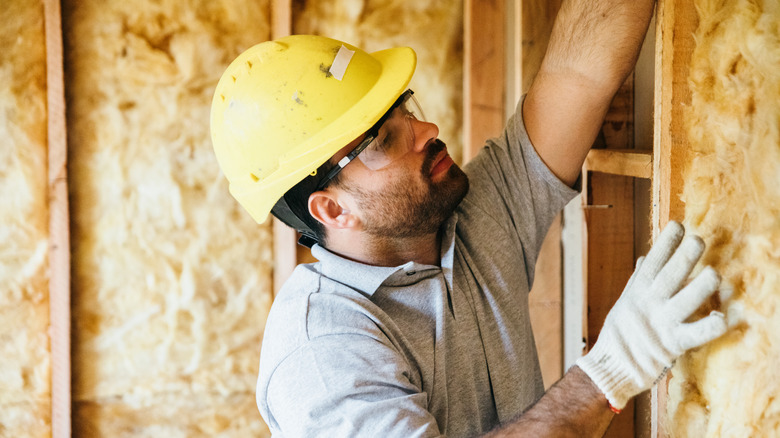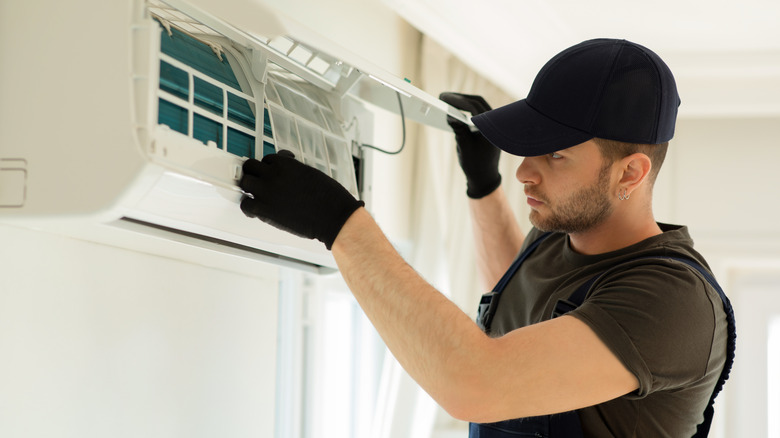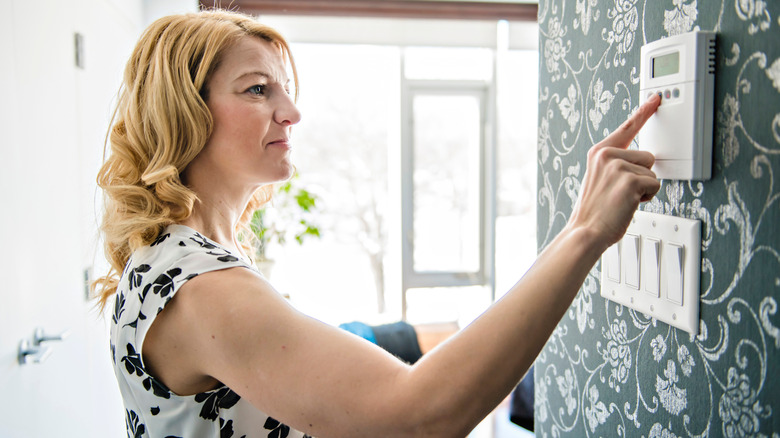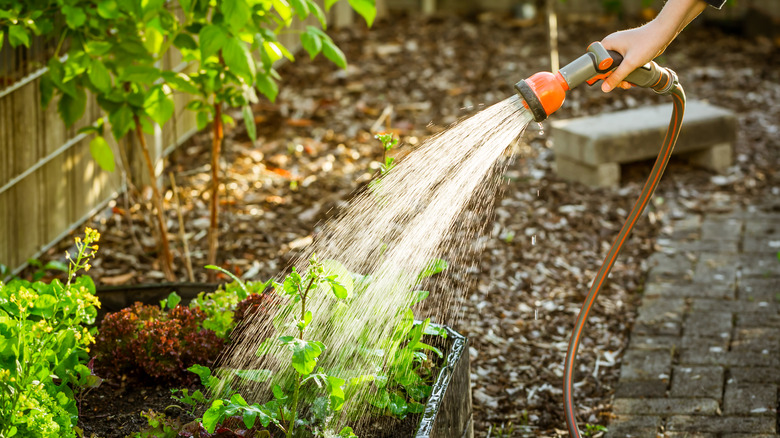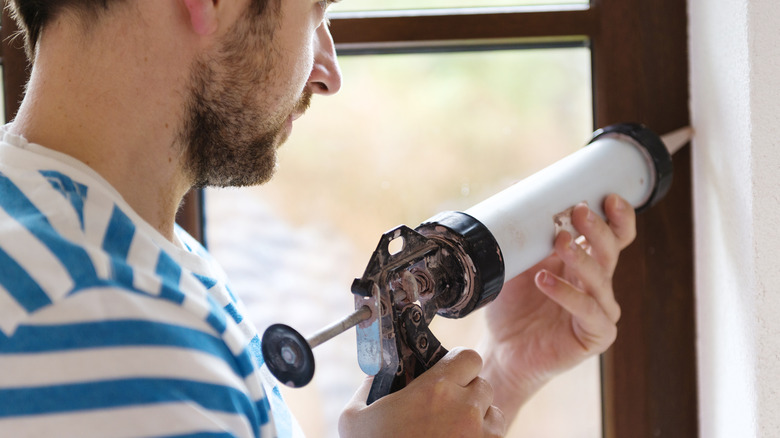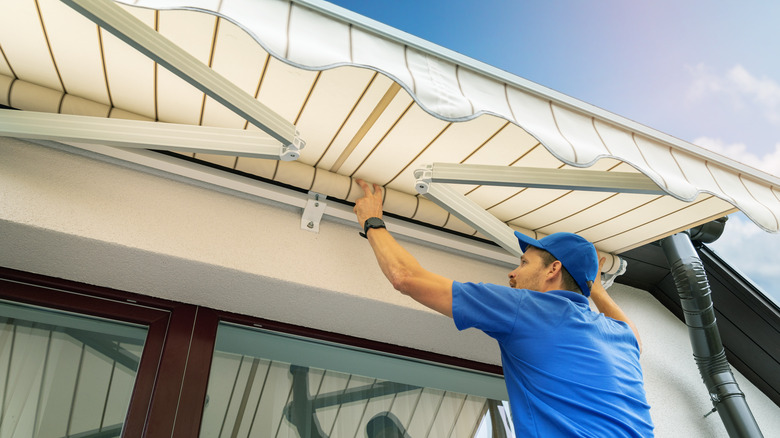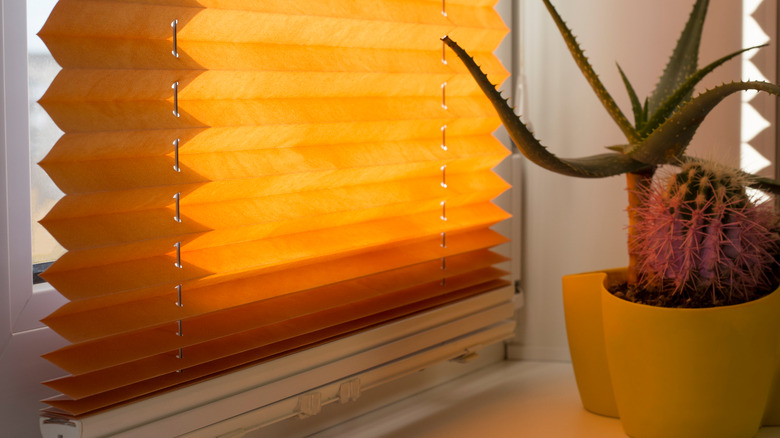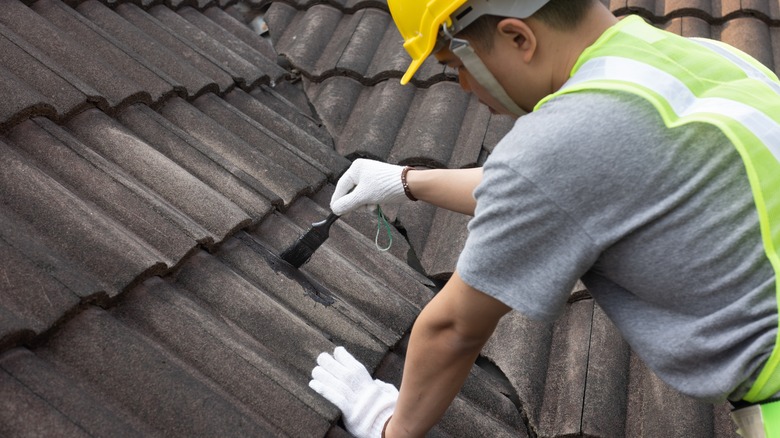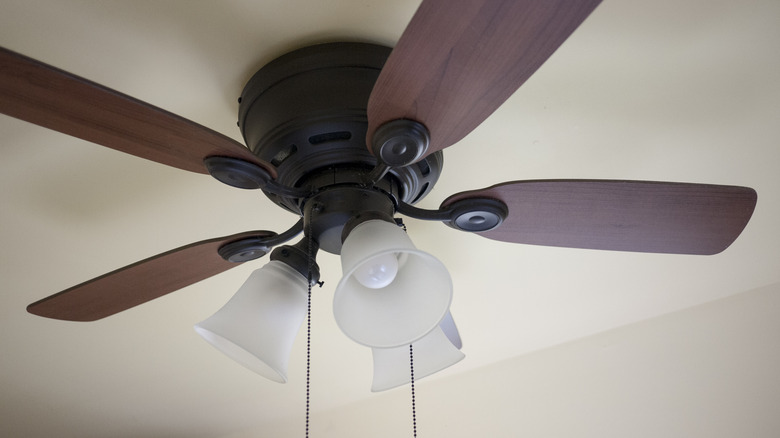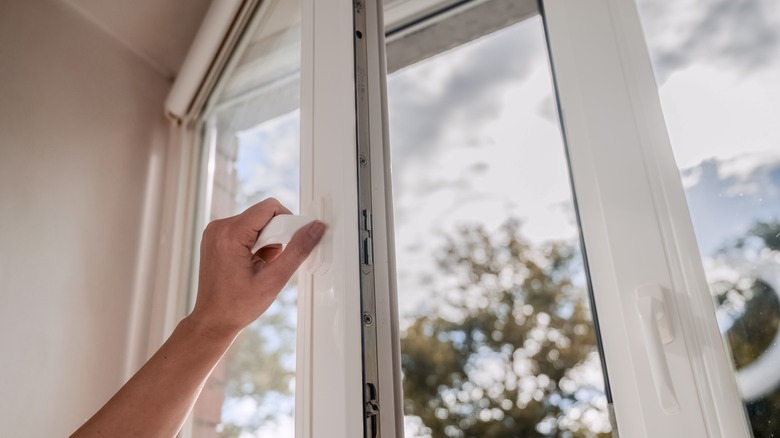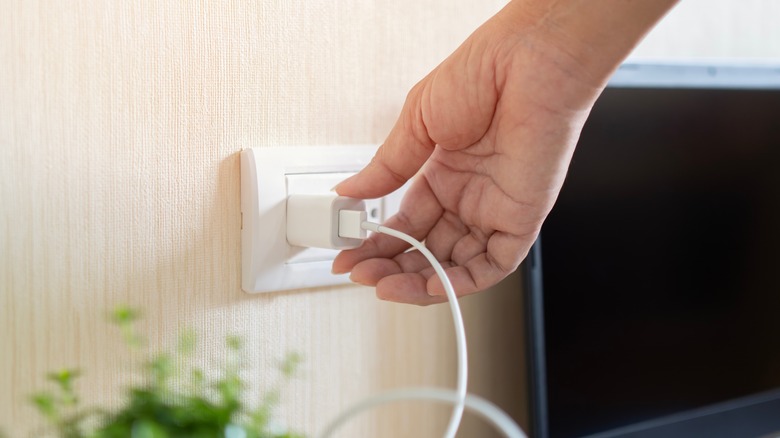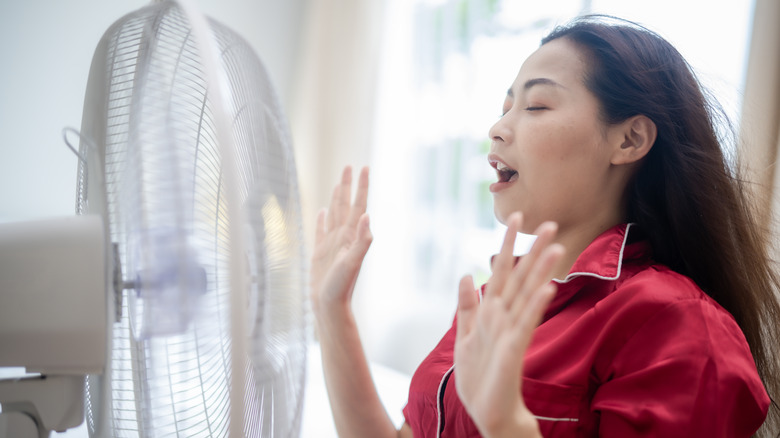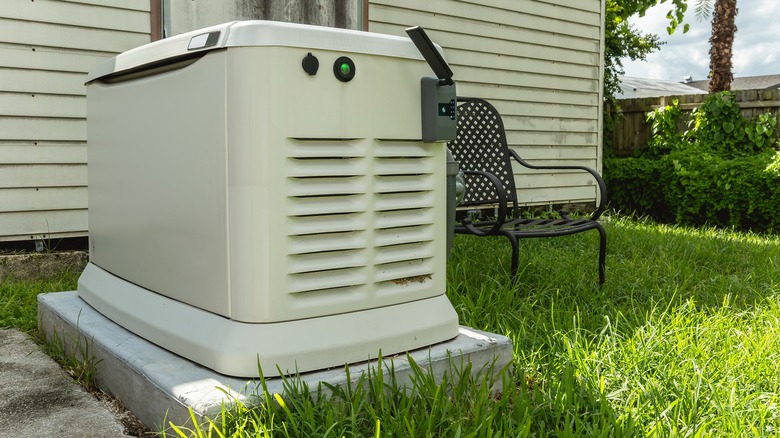14 Helpful Tips For Keeping Your Home Protected In Extreme Heat
We may receive a commission on purchases made from links.
Once summer arrives, sweltering heat often grips many parts of the country, causing temperatures to soar above 80, 90, or even 100 degrees. Many people understand the damaging effects of extreme heat on people and pets, but what about your home? Just like you can (and should) take precautions to protect yourself, your family, and your pets during a heat wave, you can also take proactive measures to keep your home safe.
Oppressive heat can cause various home-related problems, such as structural issues and pipe damage. Plus, it can drastically increase your energy usage and monthly bills. Fortunately, there are many actions you can take to prepare your home's interior and exterior for hot weather. And, many have the added benefit of making it more cool and comfortable. Here are some tips for keeping your home protected, ranging from routine maintenance tasks to larger investments you can make over time.
Insulate your home to keep the heat out
Many people think of insulating their homes in the winter, but it can be just as beneficial in the hotter months. During the summer, heat flows from the outdoors into your home, and insulation acts as resistance to minimize this heat flow. Doing so saves your air conditioner from working overtime and keeps your home cool.
Ahead of the heat, take some time to check your home's insulation to ensure it's performing at its best. Start in the attic, where you may have some room for improvement. Ideally, the recommended insulation level in an attic is between 10 and 14 inches, though it can vary depending on where you live. In other rooms of the home, you can also check the insulation in your exterior walls by removing the baseboard or looking behind an electrical outlet. It can be tougher to know whether you have adequate insulation, so you might be better off calling a professional for an inspection.
In addition to checking your attic and walls, you can also take other steps to improve your home's insulation. Walk around the exterior and look for cracks along windows, doors, and other areas. Caulk any gaps you find to prevent excess warm air from entering your home.
Clean and service the AC to prepare it for a heat wave
Your home's air conditioner provides much-needed comfort during a heat wave. Make sure it's up to the job by keeping the unit clean and well-maintained. It's a good idea to get your heating, ventilation, and air conditioning (HVAC) system checked at least once a year. An HVAC technician can thoroughly clean and inspect it to ensure it's ready for warmer weather.
However, you can also do some basic cleaning on your own. Whether you have a window unit or central AC, you can follow similar steps to perform this maintenance. Start by unplugging or turning off the power to the unit and removing the filter. If it's dirty or clogged, clean the filter with soapy water or replace it. If you have a central AC unit, it's a good idea to replace the air filter about every three months.
You can also clean the coils to keep your AC running its best. If you have an outdoor unit, shut off the power and use a vacuum to remove dirt, twigs, and other debris. Clean the fins using a garden hose on a low setting, being careful not to apply too much pressure. After cleaning, wait for everything to dry completely before you turn the unit back on.
Paint the exterior a more heat-reflective color
If you're serious about protecting your home from the heat, consider painting the exterior in a light shade. Dark hues absorb the sun's energy, which can transfer heat into your home. In contrast, light colors reflect the heat away from your home. While painting your home can be a major project (and a significant investment), it can go a long way toward protecting your home from extreme heat. It's worth exploring this option, especially if you live in an area prone to heat waves.
When going lighter for your home's exterior, you have many options. You can choose a classic exterior paint color, such as white or beige, or you can go bold with fun colors, like light pink, yellow, or baby blue. Choose a color to reflect your personality and the style of your home. Make sure you also do your research to avoid some common exterior paint choice mistakes, like forgetting to check the rules of your neighborhood homeowners' association.
Consider a programmable thermostat
During a heat wave, running your AC nonstop can result in wear and tear as well as high energy bills. The Department of Energy estimates you can, "save as much as 10% a year on heating and cooling by simply turning your thermostat back 7°-10°F for 8 hours a day from its normal setting." Sound like a complicated math problem? Make it easier on yourself with a programmable thermostat, which automatically adjusts the temperature based on a preset schedule. For example, you can program the thermostat to increase the temperature during the day if no one's home during those hours. Your AC won't work as hard to cool an empty house, and this reduced usage can lower your energy bills.
When shopping for a programmable thermostat, consider the cooling schedule you want to have. Some thermostats allow you to program different schedules for each day, like this one available at Best Buy. You may also want to consider installing a smart thermostat, which usually comes with an app you can control from a mobile device. Whatever thermostat you choose, make sure it's compatible with your HVAC system.
Take care of your outdoor plants with water and shade
The plants in your yard or garden can suffer in excessively hot temperatures. Plan to give them some extra TLC when you see high temps in the forecast. Just like people, plants need more water in the heat. Water them deeply and pay close attention to different shrubs, perennials, and other greenery in your yard. Some may need more water, while others can manage with less. The best time of day to water your plants is in the early morning before temperatures start to rise. However, you can also water in the late evenings after it gets cooler.
Besides watering, you can follow some other guidelines to take care of your greenery. Add a thick layer of mulch around trees and shrubs. Mulch keeps the soil cooler and prevents it from drying out too quickly. Additionally, you can use products like shade cloth or landscape burlap to provide some shade in your garden. If you have potted plants, move them to a naturally shady area for extra protection from the heat.
Ensure window efficiency without a full replacement
If your home feels like a sauna, resist the urge to lower the AC and take a look at your windows instead. Old or inefficient windows may be letting excess heat into your home. While replacing your windows can help, it's not the most cost-effective solution. Fortunately, you can take other steps to improve the efficiency of your current windows. Start by inspecting the windows for potential air leaks. If the caulk appears worn, there's a good chance the window has a leak. Remove the old caulk and reapply a new seal around the seams. You can also add weatherstripping between the sash and the frame for increased insulation.
In addition to caulking and weatherstripping, there are ways you can improve window efficiency without replacing them. You can mount energy-efficient storm windows on the interior or exterior of your current windows. Storm windows provide similar benefits as a full replacement at about a third of the cost, according to the Department of Energy.
Add an exterior awning for some extra shade protection
If you have a large window that lets in heat, consider installing an awning to provide some shade. An awning looks like a miniature roof attached above a window or door on the exterior of your home. Essentially, it blocks UV rays, preventing this excess heat from entering your home. You can find awnings in different materials to match your personal style. Modern synthetic fabrics, such as acrylic and polyvinyl, offer the best protection from sunlight and moisture. Additionally, choose a color that goes well with your home's exterior, but keep in mind that light-colored attachments will reflect the sunlight better than dark shades.
Be strategic about where you add awnings to your home as well. These window attachments can reduce heat gain "by up to 65% on south-facing windows and 77% on west-facing windows," according to the Department of Energy. In the winter, however, an awning can prevent the sun from heating your home naturally. For this reason, you may want to install a retractable version, which rolls up when you don't need it.
Use window treatments to increase energy efficiency
Window treatments offer an easy, cost-effective way to increase your home's energy efficiency. Many popular window treatments, such as curtains, blinds, and shades, add style to your space while helping to control the heat. Before you go shopping, research the various window treatments to choose the right one for your space. While most provide insulation, some are more energy-efficient than others. In particular, Roman shades and cellular shades offer good UV protection. Lined drapes can also be effective at blocking the heat. You can even combine different treatments, such as shades and drapes, to maximize heat protection and create a textured, layered look.
Window film is another inexpensive way to control the heat in your home. This film has unique properties that reflect or absorb sunlight. When applied to windows, it can block excessive heat from transferring into your home, making the space feel cooler and more comfortable. You can find window film, like this option from Lowe's, at big box or home improvement stores.
Keep the roof cool to prevent heat-related damage
It's not just summer storms that can damage your roof. Extreme heat, especially over prolonged periods, can cause a roof to expand, resulting in cracked or damaged shingles. A weakened roof can also lead to other potential problems, such as leaks. After extremely hot weather, perform a visual inspection of the roof. Look for signs of damage, including discoloration and cracked or worn shingles. If you're worried about the roof's condition, hire a professional to perform a more thorough inspection and check for problems.
You can shield your roof from the heat with some proactive measures. Protective coatings, such as this product from Home Depot, can lower heat absorption to keep the roof cooler. Depending on your home, you can pursue other options, like a misting system that cools the roof's surface. And, when it's time for a roof replacement, consider using materials that can better cool your home, such as metal.
Adjust the ceiling fans when summer arrives
A ceiling fan can provide a nice breeze on a hot day, but there's a chance your fan may not be operating at its maximum capacity. Many people don't know that ceiling fans have a feature allowing you to adjust the direction of the blades. In the summer, the blades should be running counterclockwise. This direction allows the fan to push air down, creating a cooling effect in the room.
Sometimes it's hard to tell what direction the blades are running. A simple way to check is by standing below the fan and looking up at it. If it's running counterclockwise, you should feel the air movement. To change the direction of the blades, look for a switch near the fan's motor. Flip this switch to move the blades to a counterclockwise motion (but don't forget to switch it back to a clockwise direction in the winter). If you don't see a switch, consult the fan's manual or look up the model online to find out how to change the blade direction.
Promote circulation by using windows for cross-ventilation
Ceiling fans can promote circulation in your home, but there are other ways to achieve similar effects during the next heat wave. Consider using window fans to increase airflow in rooms. Place a fan in a window with the air blowing outward to push hot air from the room. You can also create cross-ventilation by opening windows in cooler rooms, ideally in shaded areas of your home. This way, those windows can bring in cooler air while the window fan expels the hotter air.
In addition to this natural ventilation, make sure you're getting the most out of your AC. Move furniture that may be blocking air vents and wipe down the register covers to remove dust or debris. A professional HVAC technician can also clean your ductwork before summer arrives to ensure there are no blockages hindering the airflow in your home.
Unplug your devices to conserve maximum energy at home
Chances are, you don't feel like venturing outside during a heat wave. You probably want to stay in your air-conditioned home where it's nice and cool. Spending more time at home, combined with an increase in your AC usage, can result in sky-high electric bills. When everyone on the block is using more energy, it can also lead to power outages, which no one wants to happen in extreme weather. During a heat wave, conserve energy where you can by lowering your appliance usage. Limit how often you do laundry or run the dishwasher. If you can, avoid using the oven, which can both increase energy usage and warm your kitchen to uncomfortable levels.
Another small way to conserve energy during hot weather is by unplugging devices when you're not using them. Many things in your home use energy even when they're turned off. Common culprits include phone chargers, computers, video game consoles, and small kitchen appliances. Go through your home and unplug what you can. In severe heat, every little bit helps to reduce your energy usage.
Have a designated cool room to lower the heat load
Scorching temperatures can cause temperatures to quickly rise inside your home. As this heat spreads, it increases the strain on your cooling system. When there's a heat wave on the horizon, having a designated cool room can lower the interior heat load and protect you and your loved ones. Choose a room in a shaded side of your home or in the basement. Use a portable AC unit or fans to keep the space cool, and cover the windows to prevent heat from entering.
With heat often comes humidity, so consider keeping a dehumidifier in your cool room. A dehumidifier works by removing moisture from the air. Not only does it make you feel more comfortable, but it can also protect your home from the effects of humidity, such as warped wood or mold growth. Air quality can also be a concern during hot weather, so you may want to have an air purifier on hand as well.
Prepare for power outages with a backup generator
Excessive heat can create increased stress on the electrical grid, leading to power outages. Planned outages, known as rolling blackouts, are also more common in hotter months to manage the power supply. Whether planned or not, these can cause potential problems in your home. You may be dealing with spoiled food, damaged electronics, or sump pump failure. Plus, it can get downright uncomfortable after several hours without the AC. A backup power supply, such as a generator, can be a good investment if you live in an area with extreme weather or frequent rolling blackouts. Determine what size generator you need to power your home reliably if an outage occurs.
You can also prepare for outages by having a plan ahead of time. Keep your home stocked with essentials, like flashlights, batteries, and nonperishable foods. Go to the coolest part of your home, such as the basement, during an outage. If you're worried about the heat becoming unbearable, check to see if your local community offers cooling centers where you can go if you lose power.
